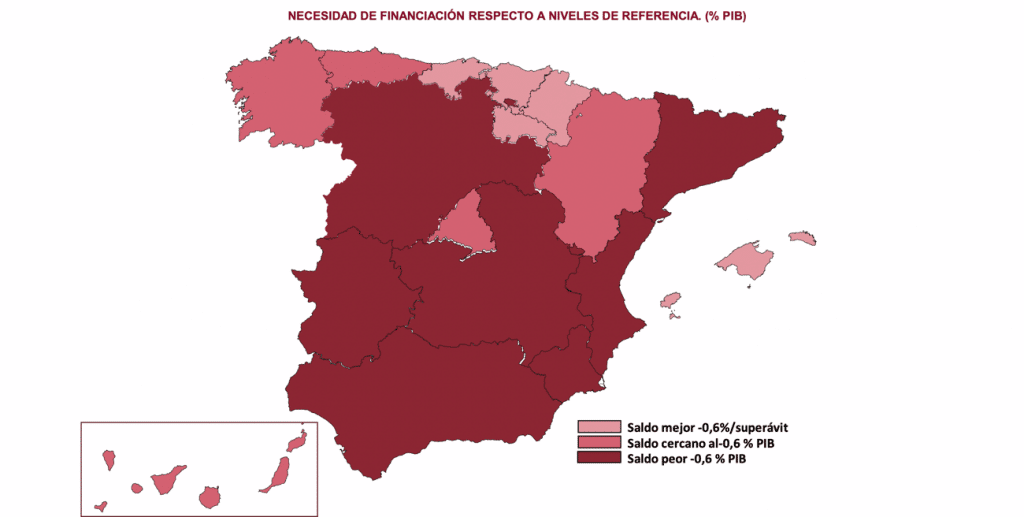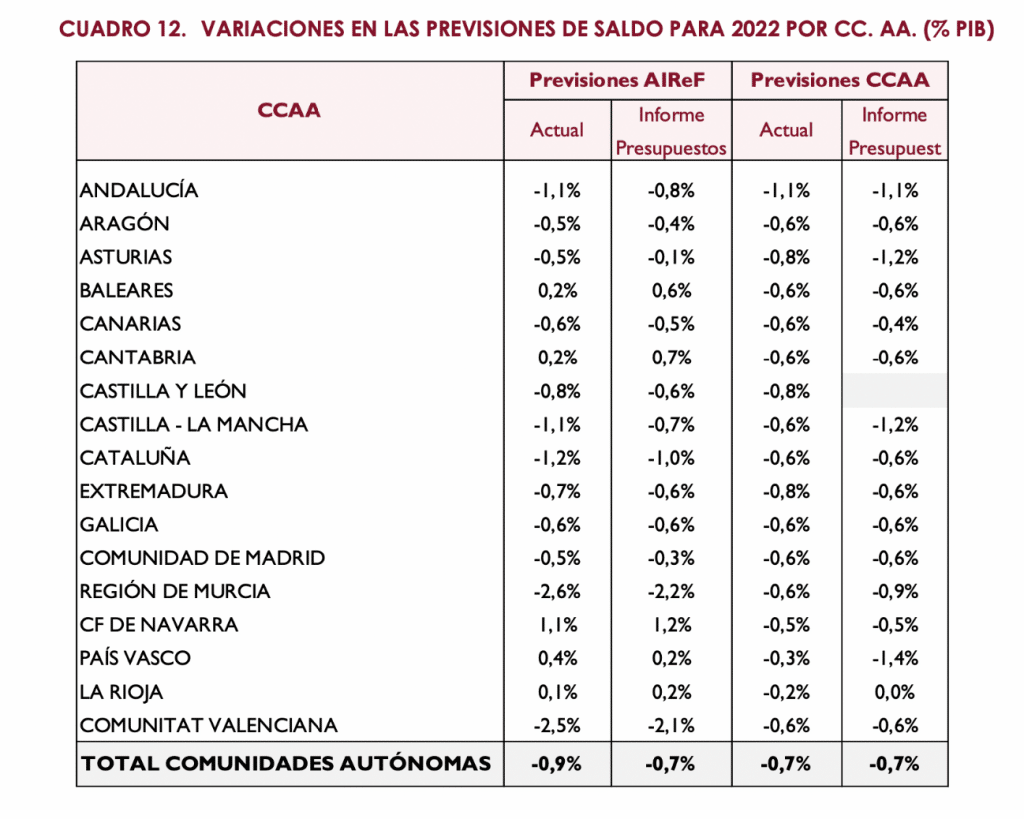
The Independent Authority for Fiscal Responsibility (AIReF) published last Friday the Report on Budgetary Execution, Public Debt and the Expenditure Rule, in which it worsens the deficit forecast of the AR sub-sector in 2022 to 0.9% of GDP.
AIReF thus estimates a greater deficit for the ARs than the Government (-0.8% of GDP) and 0.3 points above the reference rate of -0.6% of GDP. The change is primarily the result of the upward revision of expenditure due to the observed execution data, which might reflect a higher level of pandemic-related spending than estimated in the previous report, and a lower forecast of revenue from European funds.
AIReF forecasts that the revenue of the ARs at the end of 2022, excluding the RTRP, will amount to 15.1% of GDP, after falling 7% on 2021. As for expenditure, excluding that associated with the RTRP, AIReF raises its forecasts for the sub-sector as a whole compared with its previous estimate, placing it at 16% of GDP, after falling by just over 1% compared with the 2021 level.
At an individual level, AIReF worsens its forecasts for all the ARs, except for Galicia and the Basque Country. With the current information available, it estimates that seven ARs (Andalusia, Castile and Leon, Castile-La Mancha, Catalonia, Extremadura, Murcia and Valencia) will reach a balance above the reference of -0.6% of GDP. Five other ARs (Aragon, Asturias, Canary Islands, Galicia and Madrid) would close with a deficit close to this rate. And the remaining five (the Balearic Islands, Cantabria, Navarre, the Basque Country and Rioja) could close with balances close to equilibrium or even a surplus.
However, most of the ARs expect to achieve a deficit similar to or higher than the established reference. The current year-end forecasts of Andalusia, Asturias, Castile and Leon and Extremadura include a deficit higher than the reference set for the sub-sector (-0.6%). Only Navarre, the Basque Country and Rioja expect to close below the reference rate (of -0.9% in Navarre and the Basque Country). The other ARs estimate a balance similar to -0.6% of GDP.

In the medium term, AIReF estimates that the revenue from the financing system of the Autonomous Regions under the ordinary regime will be exceptionally positive over the next two years, returning to normal as from 2025. According to AIReF, if expenditure not associated with EU funds evolves in the following years in line with the baseline growth estimated by AIReF, the expected fiscal deterioration in 2022 could be reversed in the following years.
In this context, the advantages of having a medium-term fiscal strategy at a national level are fully applicable to the specific scope of action of each public administration. For this reason, among its recommendations, AIReF has included two addressed to all the ARs:
- That they should frame the preparation of budgets for 2023 within a medium-term fiscal strategy that considers the structural or cyclical nature of expenditure and revenue.
- That they should avoid increases in expenditure or reductions in revenue of a structural nature whose permanent funding is not guaranteed once the extraordinary revenue flows expected in the coming years disappear.






